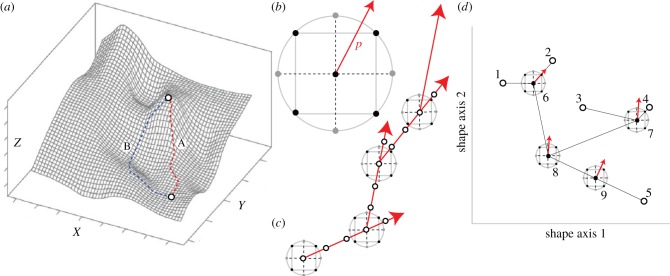Figure 1.
Macroevolutionary application of RSM and paths of steepest ascent/descent. (a) A hypothetical functional landscape, showing the paths taken by the steepest ascent (path A) versus a non-optimal route (path B) to a local optimum in Z-value (measured performance or function) relative to the input factors X and Y (adapted from [21]). (b) The central composite design (CCD) approach of RSM, with a basic box or square structure (black points, the approach used in this study) and a crossed star structure (grey points), applicable for two-factor systems. A polynomial model is fitted to experiments conducted at each of the black and grey points, and a path of steepest ascent/descent (p) is calculated. (c) An example of iterative experiments informed by paths of steepest ascent/descent, showing a series of CCD experiments conducted at the peak of the projected steepest path in the preceding experiment. The paths lead progressively closer to the optimal solution. (d) How RSM can be applied in a macroevolutionary, functional morphological context. A hypothetical phylomorphospace of five terminal nodes (nos. 1–5) and four internal nodes (nos. 6–9). Thin lines connecting nodes represent approximate evolutionary pathways, and CCD experiments at internal nodes show the path of steepest ascent/descent (arrows) at that node. (Online version in colour.)

